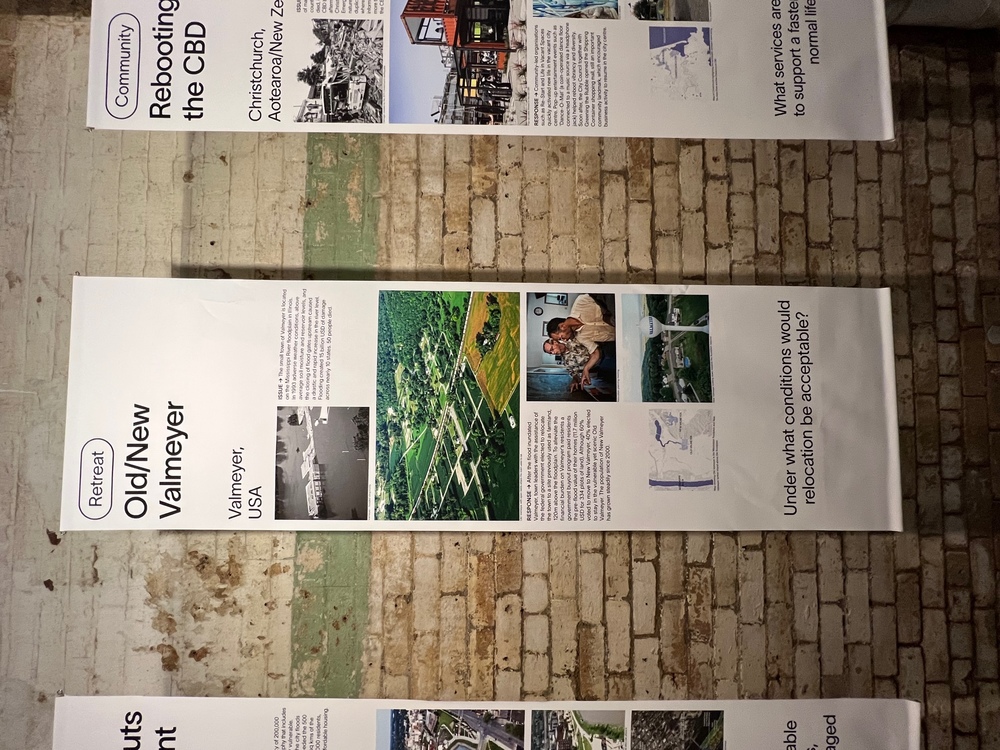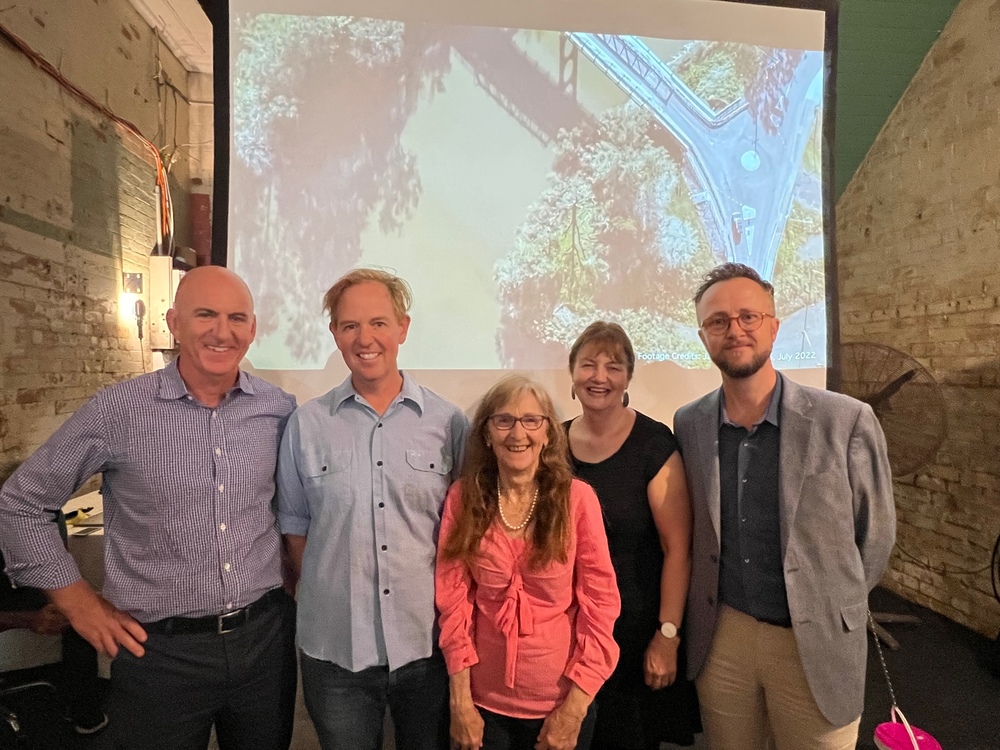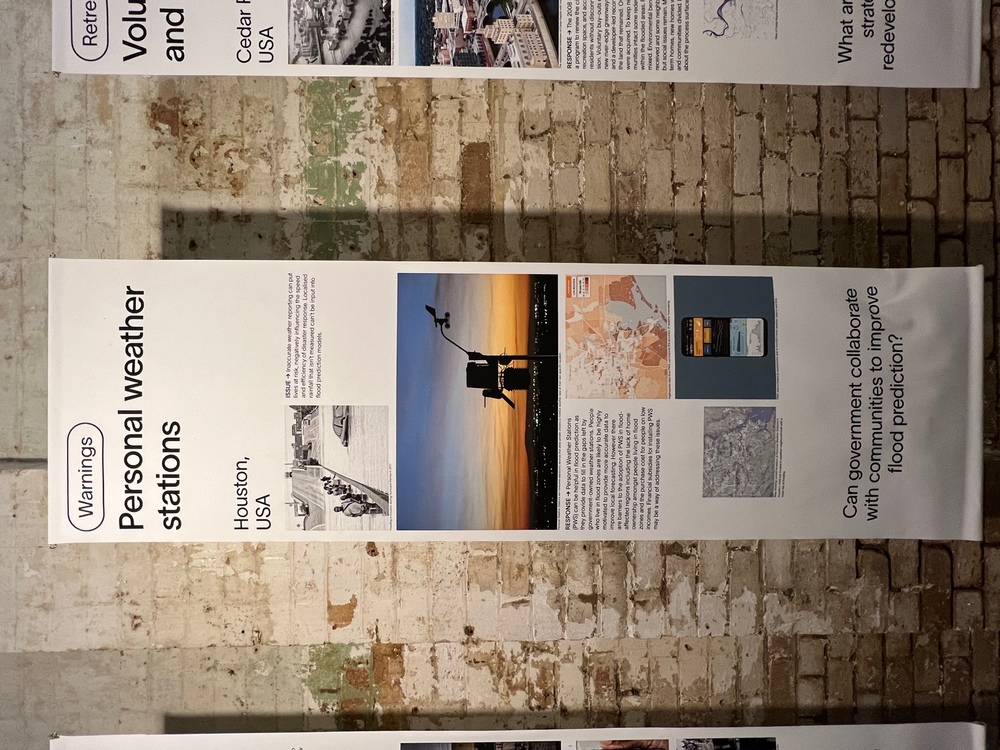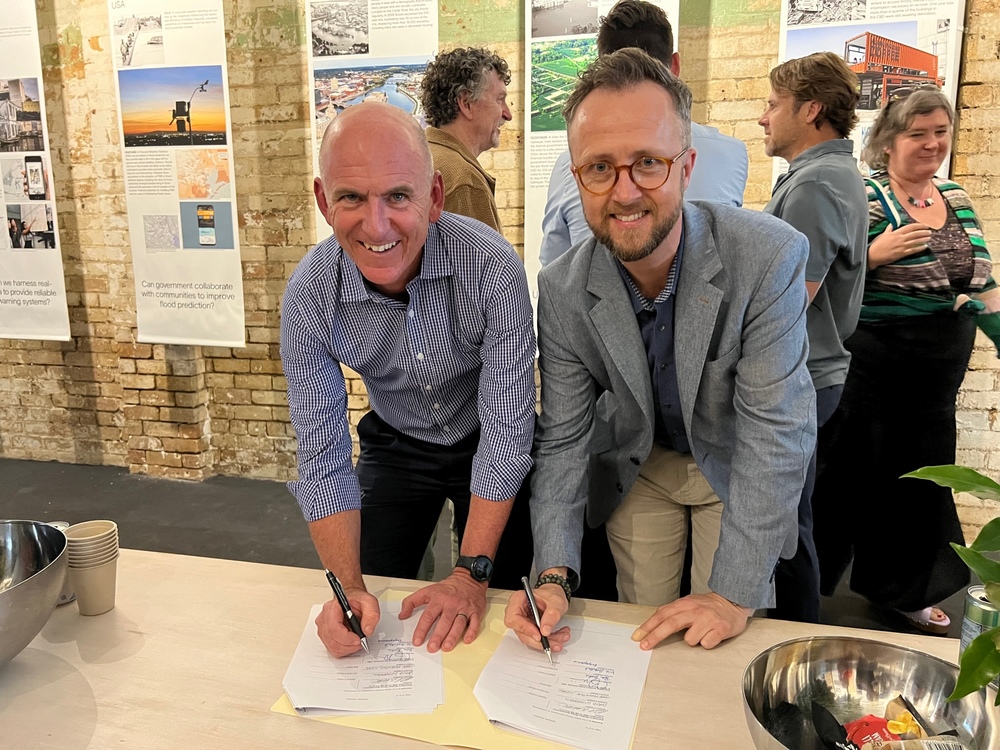Living Lab opens in Woodlark Street as Lismore builds a future
Simon Mumford
23 November 2022, 7:01 PM
 A big crowd turned out for the officially opening of the Living Lab on Woodlark Street
A big crowd turned out for the officially opening of the Living Lab on Woodlark StreetThe Living Lab was officially opened yesterday evening and it is a place that every Lismore and Northern Rivers resident should visit in the coming months.
As you enter the building you will see Lismore's flood history from the late 1800s to now on your left with modelling and catchment maps on your right.
Keep walking and you come across about a dozen examples of cities and towns from around the world (Norway, Denmark, the US, Netherlands etc) that have experienced continuous flooding and the solutions they have found to help them live with the inevitable return of the next flood.

While many people are still immersed in rebuilding their lives that were irrevocably changed on February 28, the Living Lab provides an opportunity to start to envisage Lismore's future. You can take elements of one example and combine them with two others to form a city that you want to live in and are proud to have people visit. It is filled with optimism.
The night was opened by Dean, University of Technology Sydney (UTS) Elizabeth Mossop, CEO of Northern Rivers Reconstruction Corporation (NRRC) David Witherdin, Vice President Engagement Southern Cross University Ben Roche, Member for Lismore Janelle Saffin and Dan Etheridge, who Ben Roche described as an alumnus, a North Lismore resident and someone with deep deep expertise and experience in this space.

(David Witherdin, Dan Etheridge, Janelle Saffin, Elizabeth Mossop and Ben Roche at the opening of the Living Lab)
You might ask why is UTS involved in this project, the Living Lab? The Deputy Vice-Chancellor of Research at SCU Mary Spongberg is old friends with Dean Mossop who had been through Hurricane Katrina and had a lot of involvement in the recovery and rebuilding of New Orleans.
As Dean Mossop explained the role of our public universities is really important in providing expertise and unbiased advice. Through numerous conversations about how SCU could play a constructive part in the rebuilding of Lismore and the Northern Rivers, they ended with the new Living Lab in Woodlark Street.
"This is a multidisciplinary collaboration between the two universities, that could be a resource for the whole region," Dean Mossop said, "The idea is that we will be able to bring together the best experts from Australia and from overseas to provide the advice and develop solutions to the recovery and rebuilding challenges of the region."

"This has got to be done through research, which is the core business of what universities do, through community engagement, without which there can be no successful recovery or rebuilding and also through the development of different forms of education."
The exhibition on display is over two months' worth of work from Professors Martin Bryant and Penny Allen and other professors and students from UTS.
In the coming weeks, the plan is for SCU and UTS to host a series of conversations about the exhibition and the ideas and thoughts it generates like house raising and what it means to try and flood-proof buildings.
Dean Mossop said the program is not yet developed, it is in its infancy. "We are beginning a big conversation with the NRRC, with the local council and with all of you and community groups and everybody who is interested as a way to really understand what our priorities should be going forward."
Member for Lismore Janelle Saffin said that this was our trigger moment to make changes for the better, changes that are sustainable and adapt to weather and climate change.
"It's about hope. A hope that's real, it's practical, it's giving something to us, it's allowing us to see that we can do this, that we can get through this."

CEO NRRC David Witherdin told the room that everything we do is about community. "That's at the centre of what we do and certainly in terms of the reconstruction effort we will only be successful with partnering."
"When we're at the back end of this and we've worked through the reconstruction, the adaptation, we will have a case study that can be used elsewhere, not just in Australia but internationally of how our community has got ahead of things."
SCU's Ben Roche said that Southern Cross Universities Founding Act had a very simple statement, "The education and research of this university will meet the needs of the communities of the north coast of New South Wales." What was opened tonight plus what SCU has shown from day one after February 28 this year demonstrates they are not just words but deeds that we can see each day.
Ben went on to say that the Living Lab is a collaboration of all sorts of different experiences in different forms of knowledge.

(David Witherdin and Ben Roche sign the Memorandum of Understanding between the NRRC and SCU)
"The importance of lived experiences, in how we guide the questions we're going to be answering, the importance of drawing on technical and research experience but also the importance of indigenous knowledge and how we can bring indigenous knowledge into the centre of what we are doing as we grapple with many of the complex challenges that we are all facing in different ways now and will continue to over the months and years ahead."
As you read your way around the Living Lab there will be the opportunity for you to express your thoughts and ideas with staff as community engagement is vital to the rebuild success.
Stuart Andrews from TARWYN Park Training was at the opening with students.
Stuart runs training programs with the idea of slowing the water flow at the top of catchment areas like Leycester Creek, Wilsons River and Richmond River to allow the water to be absorbed into the ground, if it is not saturated, as well as slowing its progress into Lismore followed by Coraki, Woodburn as it makes its way out to sea. This can be achieved by creating nature-based waterways that allow the water to meander down the hill rather than rush down in virtually a straight line as has been created after many previous heavy falls through land mismanagement.
The easiest way to picture this is to think of trekkers walking up and down a mountain, they climb a mountain by traversing their way to the top. This is the same concept as water flows down from the hills through carefully created waterways. Stuart predicts this mitigation alone could save flooding in Lismore by up to 2 metres.
"You will have a flow in the river for longer but it won't necessarily be at flood level," Stuart explained, "So, it's got a less of a flow over a longer period of time, it doesn't mean that you'll be flooded for longer. So, it's holding the water back in the watershed higher up for a little bit longer but not damming it."
In his training Stuart has had Lismore City Councillors on his course as well as council staff, however, Stuart understands this is a greater region problem.
"We need things that bring community together, everybody, but what happens is there's always just isolated pockets. So, the concentration is, oh well, the problems in Lismore so we're just focussed on the people of Lismore. Hold on, this affects everybody. How are we going to fix it? By engaging with everybody."
Stuart will be one of hundreds, hopefully, thousands of ideas that flow through the Living Lab in the coming weeks and months so Lismore and the Northern Rivers can find the best possible solution for our rebuild as we learn to live with increased flood and drought events for the future.
The Living Lab is the start of an exciting opportunity for the future our small city.
The Living Lab is open Tuesdays, Wednesdays and Thursdays between 1 and 4pm at 11 Woodlark Street, which is towards the Molesworth Street end.

